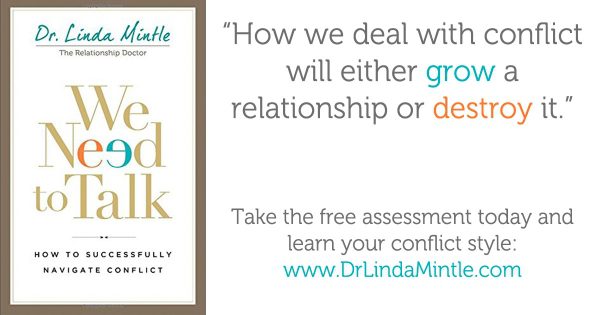If you’ve taken the FREE quiz on my website, drlindahelps.com, you know your conflict style–avoider, reactor or negotiator. Now the issue is, does your style match with those with whom you are intimate? What happens when there is a mismatch of styles, e.g., you avoid and the other person reacts?
Conflict can get stuck! The problem hits a stalemate or it doesn’t get resolved.
In order to work with different styles of conflict, we need to learn to accommodate and make a few modifications in our own styles. Remember, styles are typically learned in your original families. That means, they can be unlearned or modified.
If you avoid and you are with a reactor, you develop the classic pursue-distance pattern in a relationship. Avoiders need to understand what the reactor is feeling and give space for the person to express those feelings. This means avoiders have to become more comfortable with emotional expression, especially negative emotions. The best way to do this is to tolerate your anxiety around hearing about the issue. Don’t distance, stay in the dialogue.
The reactor needs to be aware of how uncomfortable this if for the avoider and make efforts to calmly present their emotions and not overwhelm the avoider. This means taking the intensity down a notch. Pray, do some deep-breathing, take a time out and collect yourself. This helps the avoider stay in the conflict and push to bring up issues.
If you are a reactor with a negotiator, agree that emotion is important, but needs to be controlled. Negotiators must pay attention to the emotions of others. Conflict is not just a head thing, but a heart issue for many of us.
For mismatches, think about your style and how you can accommodate the other with a few modifications like pushing yourself to address problems or staying calm during a conflict. These modifications will make conflict a much easy process to resolve.



